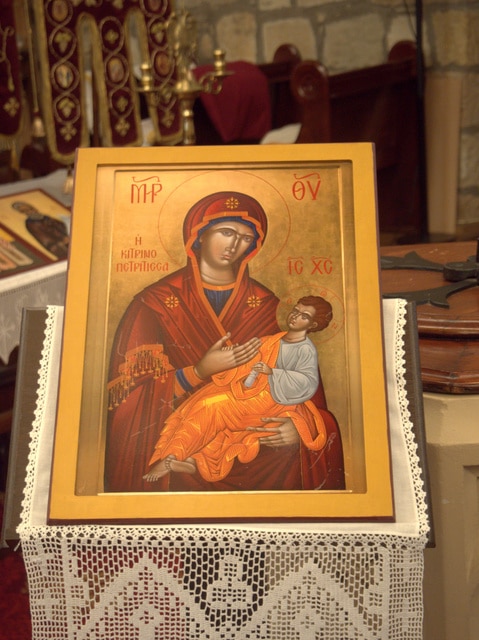Over the past weekend we have been treated to often rare access to a huge number of houses and buildings not normally open to the public as part of Open House Hobart. Buildings both public and private (in terms of ownership), contemporary and heritage-listed, have been avaialble to the curious who fronted up in droves to take a look behind the front door.

Tasmania has a wealth of heritage buildings, and many dating back to the first half of the nineteenth century were open. It was fascinating to see what uses they are being put to, and more generally, the clever re-use of buildings – not necessarily very old or heritage listed ones – to give them purpose, relevance and a further life well beyond that which their original builders probably imagined.
Possibly one of the most intriguing examples of adaptive re-use of a heritage building is the formerly Anglican Holy Trinity Church in North Hobart which has been acquired by the Greek Orthodox Church. The building, which dates from the late 1840s – notes on its history on Geoff Ritchie’s blog) has come with baggage – there are many restrictions on what can be altered due to its heritage values and status, considerable funds are being spent on conservation of its heritage fabric (in particular the roof and crumbling sandstone tower); and it also came with a community of bell-ringers who collectively own the very bells in said tower.
Even though bells don’t generally form any part of the Orthodox service, Father Timothy explained that the various requirements and relationships enrich the congregation and the community and in no way are seen as burdensome or limiting. Even the installation of these amazing chandeliers, brought all the way from Athens, has been done in a way that is fully reversible and makes no lasting impact on the structure.
Holy Trinity Church in North Hobart has eight bells and these are the pulls that operate them. The bells belong to the Bell Ringers Association, and not to the church’s new owners, the Greek Orthodox Church, in whose services bell ringing plays no part.
However the relationship is good and it seems that the main opposition to the bells being rung comes from some of the local neighbours; it seems not everyone is keen on having their domestic peace, let alone their Sunday sleep in, disturbed in these godless days. So they are rung by appointment only. The lady who showed us around had been ringing them (the same group rings the bells of Saint David’s Cathedral) since the 1960s. It is just possible that she rang the bells at my parents’ wedding when they were married at Holy Trinity in December 1964.